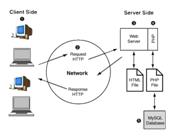What is client/server Model computing?

I want to know how client/server computing works.
I know it is a type of distributed computing where client communicates with server for exchanging data, but how it works?














